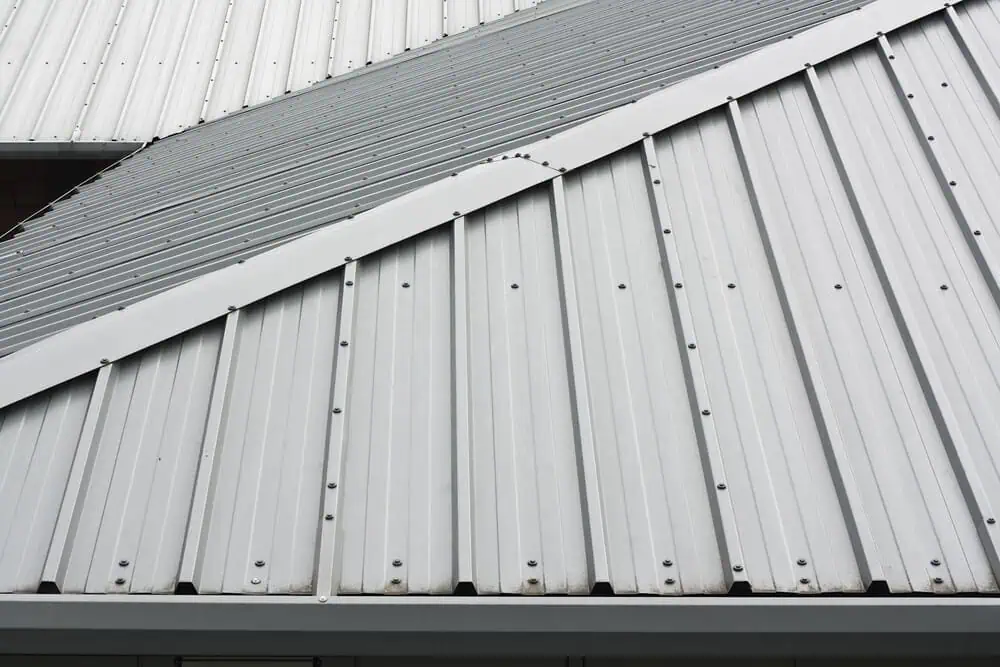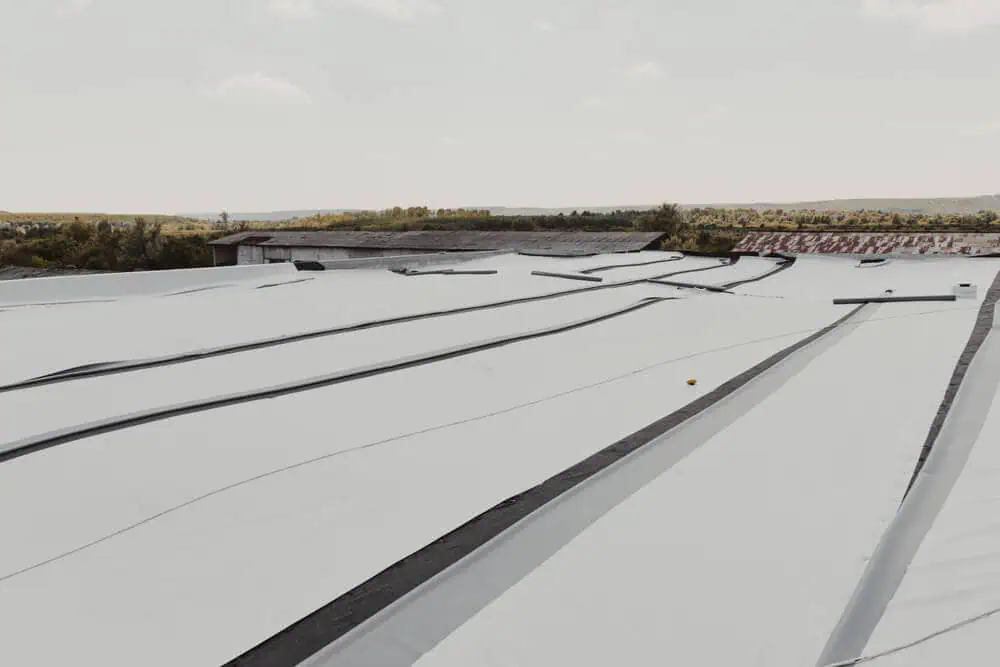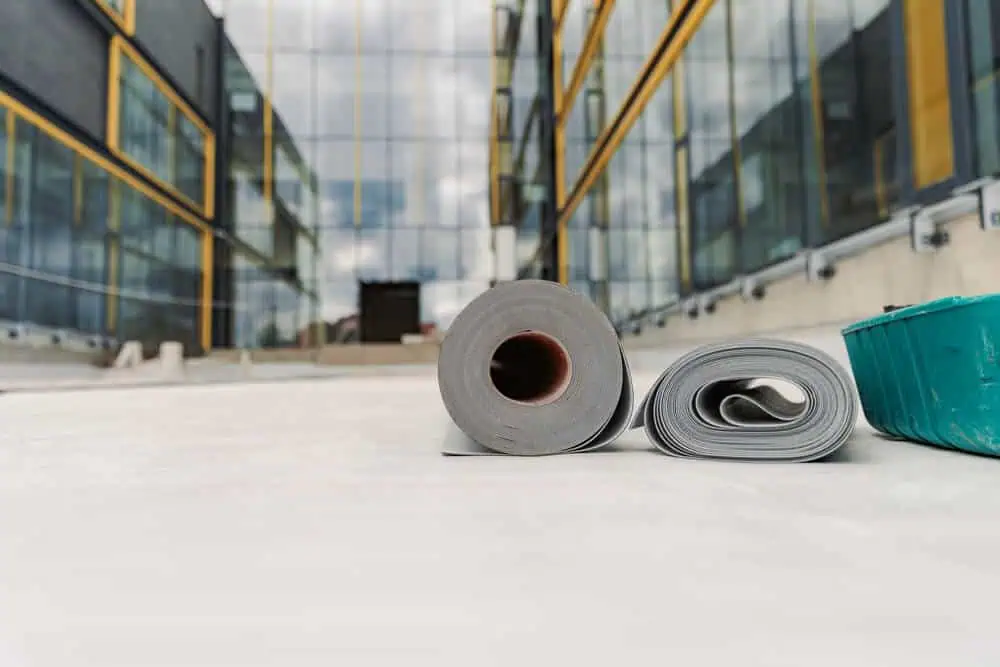Commercial roof replacement cost calculation can be a complicated topic. Building owners need an idea of what a replacement project will cost so they can budget and manage their expenses, but there are a lot of factors that impact that number. The cost of roofing materials, labor rates, building size, and requirements specific to the site can drastically impact the price. In this guide, we’ll break down the key considerations and provide some clarity on the costs of a commercial roof replacement project.
Key Factors Affecting Commercial Roof Replacement Cost
As mentioned, there are a lot of factors that determine the cost of commercial roof projects, impacting full replacement or repair costs. The following are the most common and important factors to consider.
1. Type of Commercial Roof System
The type of commercial roof system plays a significant role in determining the overall roof replacement cost. Common systems include:
- Flat roofs and low-slope roofs require a specialized membrane system. These sheets of membranes are unrolled and their edges overlapped, helping prevent water from pooling and penetrating the membranes. Waterproof barriers can also be created using asphalt-based sealants and adhesives, depending on the material chosen.
- Pitched roofs are less common on commercial buildings, simply due to these buildings’ typical size and the materials that would be required. But, these roofs shed water easily, so water penetration is less of a concern. Asphalt shingles and metal roofs are common on these structures.
2. Roofing Materials Selection
The roofing materials you choose will significantly affect the final cost of your project. In 2025, typical choices include:
- Single-Ply Roofing: The most common modern roofing material, single-ply roofs come in wide rolls of flexible membranes that are glued or welded together with heat or adhesives. These include TPO, EPDM, and PVC, all of which are relatively affordable, durable, and can make the building more energy efficient.
- Built-Up Bituminous Roofing (BUR): These roofs consist of multiple layers of asphalt and felt, offering durability and weather resistance. They’re very heavy but can add insulation to improve energy efficiency. The materials are relatively affordable.
- Metal Roofs: Popular for their longevity and low maintenance requirements. They’re light and durable, and they typically install quickly, but they can be very expensive. Common materials include steel and aluminum.
- Shingled Systems: Shingled roofs aren’t common on commercial buildings, but on those that have pitched roofs, they’re often the most affordable way to protect the building from the elements. Asphalt shingles are durable and long-lasting, but they’re only suitable on pitched roofs.
Each material has different pricing per square foot, with metal options generally costing more but offering longer lifespans and better energy efficiency.
3. Size of the Roof
The size of your commercial roof directly impacts pricing. Large roofs require more materials, larger crews, and more installation time. They also involve a longer tear-off timeframe as well as greater disposal fees for the amount of material removed.
Contractors typically calculate costs per square foot, with larger roofs incurring higher total expenses. It’s also important to factor in the pitch of the roof on pitched systems, as higher pitches require more materials and increase the installation difficulty. It’s essential to obtain an accurate estimate that reflects your roof’s dimensions.
4. Condition of the Existing Roof
There are two times when a commercial roof gets replaced. The first is when the building owner recognizes the roof is nearing the end of its usable life and wants to be proactive. The second is when the existing roof is damaged and beyond repair.
In the first case, roof replacement costs are generally minimized. Most of the structure should be in usable condition and there aren’t many repairs to be performed. In some cases, the existing roof can stay intact while a replacement system is installed overtop with removing multiple layers of material. However, if the existing roof has been leaking, has structural issues, or other problems, the building owner can expect additional costs.
5. Labor Costs and Roofing Contractors
Labor costs are a significant factor in any roof replacement project’s budget. Roofing contractors try to work quickly to minimize the building’s exposure to the elements, and this requires a sizable workforce relative to the size of the building.
Additional Costs to Consider
Beyond materials and labor, your roofing project may involve:
- Repairs: If there is excessive structural damage, experienced roofing contractors will not install a new system without repairing the issue. This can increase the cost, even if it wasn’t included in the original quote.
- Proper Maintenance: Regular commercial roof maintenance extends the lifespan of your investment, and may be required by the manufacturer in order to cover warranties.
- Roofing Warranties: Many systems come with warranties that protect against defects, providing some peace of mind for such a large investment.
Choosing the Best Roofing Solution
Selecting the best roofing material depends on your building’s specific needs. For instance, commercial flat roofs benefit from durable materials like TPO or PVC, while sloped roofs often feature metal or shingle options. What works for one building might not work for another when it comes to commercial roofing materials, and a professional roofing contractor can help.
Balancing Cost and Longevity
Investing in high-quality roofing materials may increase the initial cost, but the reduced repair costs and longer lifespan can save money over time. Consider the following:
- Standing Seam Metal Roofs: Known for their durability and low maintenance, yet they’re expensive.
- Built-Up Bituminous Roofing: Excellent for heavy-duty applications, but if the existing roof structure isn’t up to the increased load, they may cost more in the long run.
- Square Foot Asphalt Shingles: Economical for small to medium-sized commercial buildings but aren’t typically found on larger properties.
Accurate Estimates and Final Cost Management
Work with a trusted roofing company to obtain a detailed, accurate estimate for your project. This ensures transparency regarding the final cost and helps manage expectations. Commercial building owners can budget for the cost of their finished roof with confidence, knowing that their quote is accurate and all-encompassing. And, they’ll get their money’s worth.
Let TopKey Construction Handle Your Commercial Roof Replacement
Understanding the cost of commercial roof replacement requires evaluating various factors, including the type of roofing system, materials, labor, and building specifics. At TopKey Construction, we believe in educating our customers so they understand the costs and can plan for their project. Our team of roofing professionals have decades of experience, providing the type of value and expertise your commercial buildings deserve. Contact TopKey Construction for your commercial roof replacement today.


